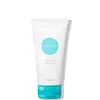What's inside
What's inside
 Key Ingredients
Key Ingredients

 Benefits
Benefits

 Concerns
Concerns

 Ingredients Side-by-side
Ingredients Side-by-side

Water
Skin ConditioningCocamidopropyl Hydroxysultaine
CleansingSodium C14-16 Olefin Sulfonate
CleansingDecyl Glucoside
CleansingCetyl Alcohol
EmollientGlyceryl Stearate
EmollientJojoba Esters
EmollientGlycerin
HumectantC12-15 Alkyl Benzoate
AntimicrobialCoco-Glucoside
CleansingGlyceryl Oleate
EmollientGlycolic Acid
BufferingLeuconostoc/Radish Root Ferment Filtrate
AntimicrobialPseudoalteromonas Exopolysaccharides
Skin ConditioningCitric Acid
BufferingArginine/Lysine Polypeptide
Skin ConditioningAcetyl Hexapeptide-30
Skin ConditioningCaprylyl Glycol
EmollientSodium Cocoyl Hydrolyzed Amaranth Protein
Skin ConditioningCitrus Aurantium Dulcis Peel Oil
MaskingCitrus Nobilis
Camellia Oleifera Leaf Extract
AstringentChamomilla Recutita Flower Extract
MaskingHydrolyzed Soy Protein
HumectantPanax Ginseng Root Extract
EmollientRosmarinus Officinalis Leaf Extract
AntimicrobialXanthan Gum
EmulsifyingCaprylic/Capric Triglyceride
MaskingCymbopogon Schoenanthus Extract
Skin ConditioningCitrus Limon Peel Extract
EmollientCitrus Aurantium Dulcis Peel Extract
Emulsion StabilisingGlyceryl Caprylate
EmollientGlyceryl Undecylenate
EmollientSodium PCA
HumectantSorbic Acid
PreservativeSodium Salicylate
PreservativeDisodium EDTA
Limonene
PerfumingWater, Cocamidopropyl Hydroxysultaine, Sodium C14-16 Olefin Sulfonate, Decyl Glucoside, Cetyl Alcohol, Glyceryl Stearate, Jojoba Esters, Glycerin, C12-15 Alkyl Benzoate, Coco-Glucoside, Glyceryl Oleate, Glycolic Acid, Leuconostoc/Radish Root Ferment Filtrate, Pseudoalteromonas Exopolysaccharides, Citric Acid, Arginine/Lysine Polypeptide, Acetyl Hexapeptide-30, Caprylyl Glycol, Sodium Cocoyl Hydrolyzed Amaranth Protein, Citrus Aurantium Dulcis Peel Oil, Citrus Nobilis, Camellia Oleifera Leaf Extract, Chamomilla Recutita Flower Extract, Hydrolyzed Soy Protein, Panax Ginseng Root Extract, Rosmarinus Officinalis Leaf Extract, Xanthan Gum, Caprylic/Capric Triglyceride, Cymbopogon Schoenanthus Extract, Citrus Limon Peel Extract, Citrus Aurantium Dulcis Peel Extract, Glyceryl Caprylate, Glyceryl Undecylenate, Sodium PCA, Sorbic Acid, Sodium Salicylate, Disodium EDTA, Limonene
Water
Skin ConditioningSynthetic Wax
AbrasiveGlycerin
HumectantDecyl Glucoside
CleansingSodium Cocoyl Isethionate
CleansingCocamidopropyl Betaine
CleansingAcrylates/C10-30 Alkyl Acrylate Crosspolymer
Emulsion StabilisingSodium Lauroamphoacetate
CleansingSodium Methyl Cocoyl Taurate
CleansingParfum
MaskingPhenoxyethanol
PreservativeCaprylyl Glycol
EmollientSodium PCA
HumectantPanthenol
Skin ConditioningSodium Hydroxide
BufferingChlorphenesin
AntimicrobialEthylhexylglycerin
Skin ConditioningHexylene Glycol
EmulsifyingDisodium EDTA
Sodium Hyaluronate
HumectantPapain
Skin ConditioningCarbomer
Emulsion Stabilising1,2-Hexanediol
Skin ConditioningAlgin
MaskingWater, Synthetic Wax, Glycerin, Decyl Glucoside, Sodium Cocoyl Isethionate, Cocamidopropyl Betaine, Acrylates/C10-30 Alkyl Acrylate Crosspolymer, Sodium Lauroamphoacetate, Sodium Methyl Cocoyl Taurate, Parfum, Phenoxyethanol, Caprylyl Glycol, Sodium PCA, Panthenol, Sodium Hydroxide, Chlorphenesin, Ethylhexylglycerin, Hexylene Glycol, Disodium EDTA, Sodium Hyaluronate, Papain, Carbomer, 1,2-Hexanediol, Algin
Ingredients Explained
These ingredients are found in both products.
Ingredients higher up in an ingredient list are typically present in a larger amount.
Caprylyl Glycol is a humectant and emollient, meaning it attracts and preserves moisture.
It is a common ingredient in many products, especially those designed to hydrate skin. The primary benefits are retaining moisture, skin softening, and promoting a healthy skin barrier.
Though Caprylyl Glycol is an alcohol derived from fatty acids, it is not the kind that can dry out skin.
This ingredient is also used as a preservative to extend the life of products. It has slight antimicrobial properties.
Learn more about Caprylyl GlycolDecyl Glucoside is a glucose-based surfactant and emulsion stabilizer. It is created by reacting glucose with the fatty acids from plants.
Surfactants help clean the skin by trapping oil, sebum, and dirt to be washed away. As an emulsion stabilizer, it stabilizes the ingredients in a product by preventing them from separating.
This ingredient is biodegradable and non-toxic. This ingredient is commonly found in baby shampoos.
Decyl Glucoside is sometimes used to stabilize the UV filter Tinosorb.
Learn more about Decyl GlucosideDisodium EDTA plays a role in making products more stable by aiding other preservatives.
It is a chelating agent, meaning it neutralizes metal ions that may be found in a product.
Disodium EDTA is a salt of edetic acid and is found to be safe in cosmetic ingredients.
Learn more about Disodium EDTAGlycerin is already naturally found in your skin. It helps moisturize and protect your skin.
A study from 2016 found glycerin to be more effective as a humectant than AHAs and hyaluronic acid.
As a humectant, it helps the skin stay hydrated by pulling moisture to your skin. The low molecular weight of glycerin allows it to pull moisture into the deeper layers of your skin.
Hydrated skin improves your skin barrier; Your skin barrier helps protect against irritants and bacteria.
Glycerin has also been found to have antimicrobial and antiviral properties. Due to these properties, glycerin is often used in wound and burn treatments.
In cosmetics, glycerin is usually derived from plants such as soybean or palm. However, it can also be sourced from animals, such as tallow or animal fat.
This ingredient is organic, colorless, odorless, and non-toxic.
Glycerin is the name for this ingredient in American English. British English uses Glycerol/Glycerine.
Learn more about GlycerinSodium PCA is the sodium salt of pyroglutamic acid. It is naturally occurring in our skin's natural moisturizing factors where it works to maintain hydration.
The PCA stands for pyrrolidone carboxylic acid, a natural amino acid derivative.
This ingredient has skin conditioning, anti-inflammatory, and humectant properties. Humectants help hydrate your skin by drawing moisture from the air. This helps keep your skin moisturized.
Learn more about Sodium PCAWater. It's the most common cosmetic ingredient of all. You'll usually see it at the top of ingredient lists, meaning that it makes up the largest part of the product.
So why is it so popular? Water most often acts as a solvent - this means that it helps dissolve other ingredients into the formulation.
You'll also recognize water as that liquid we all need to stay alive. If you see this, drink a glass of water. Stay hydrated!
Learn more about Water